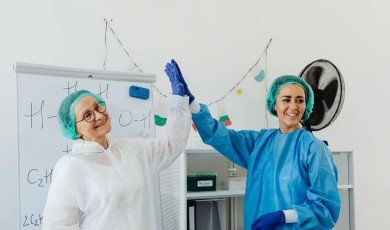
Cancer has long been one of the most daunting challenges in medicine. For decades, treatment relied heavily on surgery, radiation, and chemotherapy. While effective in many cases, these approaches often came with severe side effects and were unable to fully address the complexity of cancer’s many forms. Today, however, we stand at the edge of a new frontier. Advances in biotechnology, precision medicine, and global collaboration are driving the development of smarter cancer treatment drugs, therapies that are more targeted, less invasive, and increasingly personalized.
From One-Size-Fits-All to Precision
Traditional chemotherapy attacks all rapidly dividing cells, which means it often harms healthy tissues as well as cancerous ones. New generations of cancer drugs, however, are being designed to target specific genetic mutations or molecular pathways unique to tumor cells.
-
Targeted therapies block the growth signals cancer cells depend on.
-
Immunotherapies activate the body’s own immune system to recognize and destroy tumors.
-
Cell-based therapies, such as CAR-T treatments, re-engineer immune cells to attack cancer with remarkable precision.
This shift represents a profound leap forward: rather than treating cancer as a single disease, modern medicine is tailoring therapies to each patient’s unique biology.
The Role of Data and Genomics
The mapping of the human genome has revolutionized oncology. Genetic sequencing enables doctors to identify mutations driving tumor growth and match patients with the most effective drugs. This is particularly important in complex cancers like lung or breast cancer, where multiple genetic variations exist. Artificial intelligence further accelerates discovery. Machine learning models analyze massive datasets, revealing patterns that guide drug design and predict patient response. What once took years in the lab can now be achieved in months.
Clinical Trials and Global Collaboration
Smarter cancer treatment drugs cannot reach patients without rigorous testing. Clinical trials remain the cornerstone of approval, but they have become more global and inclusive than ever before. Multinational research networks test therapies across diverse populations, ensuring effectiveness beyond narrow demographic groups. This globalization introduces both opportunity and complexity. Scientists, regulators, and patients across continents must work together seamlessly. Here, online certified translation services play an unexpectedly crucial role. By ensuring that trial protocols, consent forms, and regulatory submissions are accurately translated, they help bridge language barriers and maintain compliance with international standards. Without these services, vital research could stall, and patient safety might be compromised. Accurate translation isn’t just about language, it’s about trust, ethics, and access to life-saving treatments.
Reducing Side Effects, Improving Lives
A major goal of new drug development is not only to extend survival but also to improve quality of life. Many of today’s smarter drugs are designed to minimize collateral damage to healthy cells. For example, checkpoint inhibitors, a type of immunotherapy, have shown remarkable results in treating melanoma and certain lung cancers, with fewer side effects compared to chemotherapy. Similarly, oral targeted therapies allow patients to take medicine at home, reducing hospital visits and maintaining daily routines. The progress is clear: treatment is no longer only about fighting disease, but also about preserving dignity and well-being.
Challenges Along the Path
Despite breakthroughs, challenges remain. Cancer is a shape-shifting disease that can develop resistance to therapies over time. Drug costs also present barriers, especially in low- and middle-income countries. Ensuring equitable access requires innovative financing models, policy reforms, and international cooperation. Another challenge lies in communication. Patients and families must navigate complex medical information. Again, tools like online certified translation services can help by making critical documents, diagnoses, treatment plans, medication guidelines, accessible in multiple languages. This ensures that no patient is left behind due to language barriers, whether in clinical trials or in routine care.
The Future: Combination and Personalization
Experts predict that the future of cancer treatment will increasingly involve combination therapies, where multiple drugs are used together to block different cancer pathways simultaneously. This reduces the chance of resistance and enhances overall effectiveness. Personalized medicine will also continue to expand. By analyzing biomarkers, doctors will be able to predict not only which drug works best but also the ideal dosage and treatment schedule for each individual. At the cutting edge, researchers are exploring cancer vaccines, nanotechnology for drug delivery, and next-generation immunotherapies. Each of these innovations brings us closer to treatments that are smarter, safer, and more effective.
Why Smarter Drugs Matter for Policy and Society
Cancer treatment isn’t just a scientific challenge, it’s a societal one. Governments, healthcare providers, and advocacy groups must work together to ensure that innovations reach those who need them most. Policies that support research funding, expand access to genetic testing, and regulate fair pricing are critical. So is public communication: citizens must understand the importance of preventive care, early diagnosis, and participation in trials. Here again, accessible communication, supported by reliable translation, becomes a public good. Whether it’s an international health report or a patient information sheet, accuracy and trust are paramount.
Conclusion
We are entering a new era in the fight against cancer. Smarter cancer treatment drugs are shifting the paradigm from broad, toxic approaches to therapies that are precise, personalized, and humane. Genomics, artificial intelligence, and international collaboration are accelerating progress, while translation and communication tools ensure inclusivity and global reach. The path forward will not be without obstacles, resistance, affordability, and access remain pressing issues. But with innovation, resilience, and cooperation, the horizon looks brighter than ever. Cancer may still be a formidable adversary, but with new frontiers in treatment, humanity is better equipped to turn hope into healing.
Most Read
Featured Posts







